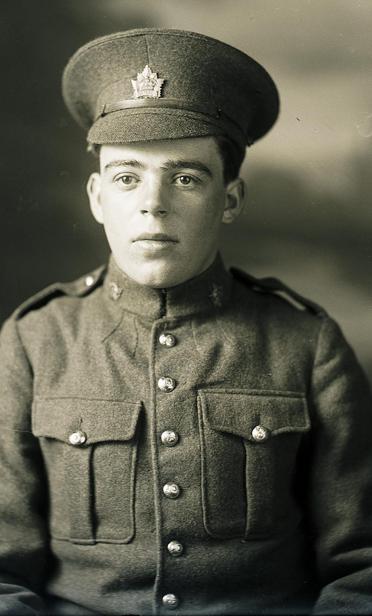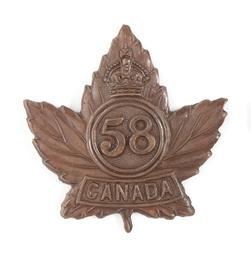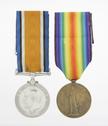Unit
58th Canadian Infantry Battalion (Central Ontario)
Branch
Infantry
Service Component
Canadian Expeditionary Force
Service Number
189450
birth
1897/07/02
Bracknell, Berkshire, United Kingdom, England
death
1917/10/26
Belgium
grave
Gender
Male
Robert Alfred Brown was born in Chavey Down, Berkshire, United Kingdom 21 July 1897 to Alfred, a brick maker, and Sarah Brown. By 1901, the family had three girls and five boys. It Is not clear exactly when Robert went to Canada but, in the 1911 United Kingdom census, Brown is still living in the United Kingdom with his father and a family of six boys and two girls. Brown went out on his own shortly thereafter to join his elder sister, Lucy who had emigrated in 1912, to St. Thomas Ontario where he worked as a labourer.
Brown attested for the Canadian Expeditionary Force (CEF) in St. Thomas 22 Nov 1915 joining the local unit, the 91st Canadian Infantry Battalion (Elgin). He left Canada at Halifax 29 Jun 1916 aboard SS Olympic arriving in Liverpool two weeks later where he transferred to the 36th Canadian Infantry Battalion for his United Kingdom training period. During this time he came down with diphtheria and was treated in the Canadian Hospital at Moore Barracks until in September 1916. He was sent to France 27 October 1916 where he joined his field unit, the 58th Canadian Infantry Battalion (Central Ontario) at its depot in France. This was a unit of the 9th Canadian Infantry Brigade in the 3rd Canadian Division. By November of that year he had joined the unit in the field.
By April 1917 the 58th was engaged at Vimy Ridge. By July it was employed in the Bois de la Haie area nearby engaging in daily skirmishes and patrols and suffering constant low-level casualties. One of these was Private Brown who was admitted to the No. 1 Canadian General Hospital at Étaples with wounds to his right arm and leg. He was returned to his unit in the field a week or so later. The 58th also participated in the action at Hill 70 in August near Lens, France.
By October 1917 the Canadian Corps had been moved to the Ypres Salient in preparation for what would be known as the battle of Passchendaele, the major element of which, for the Canadian Corps, started 26 October 1917. Brown’s unit was engaged in fierce fighting which involved moving from shell hole to shell hole taking out German positions in concrete pill boxes defended with numerous machine guns. In one attack that day, Brown’s unit was hit with enfilade fire from a farmhouse on the Belleville spur and Brown was hit in the throat by a bullet which killed him instantly. His comrades had enough time to note the circumstances of his death and file a report but not to recover his body. He was one of almost 300 men in his unit who were casualties of the 26 – 28 October action.
His body was never found and he is remembered on the Menin Gate Memorial (Panel 18-24-26-30) and on page 208 of the First World War Book of Remembrance.




